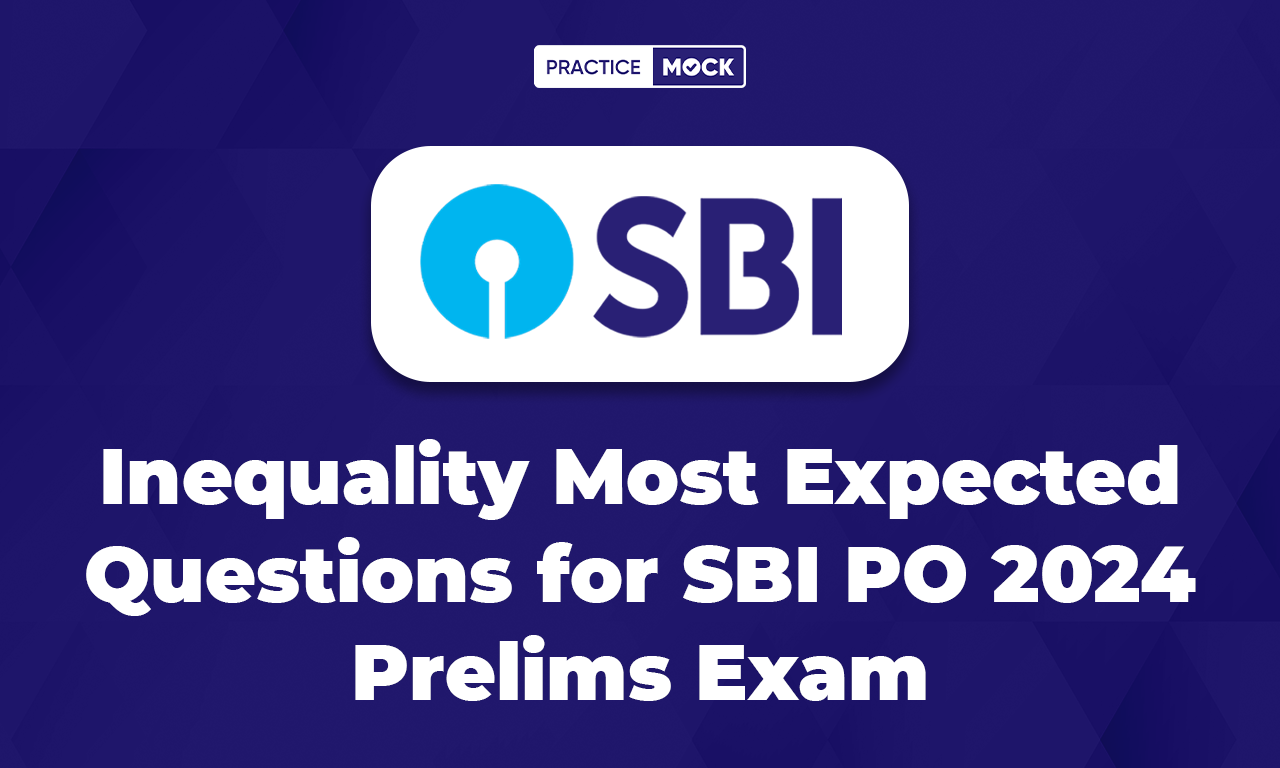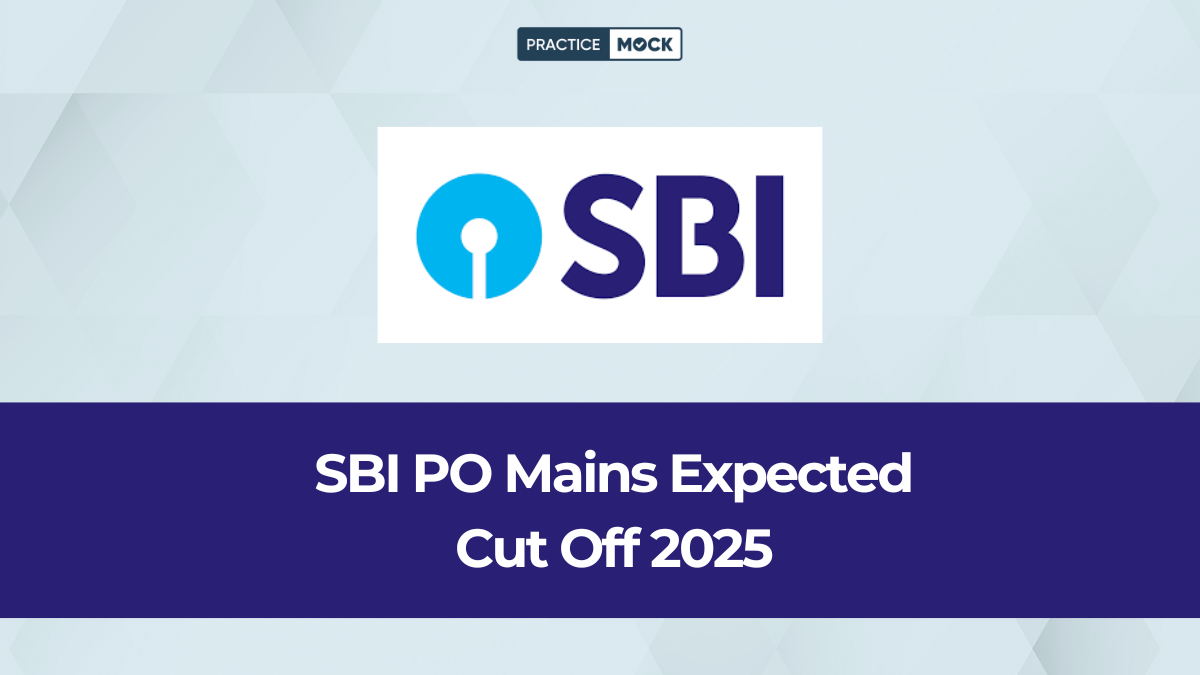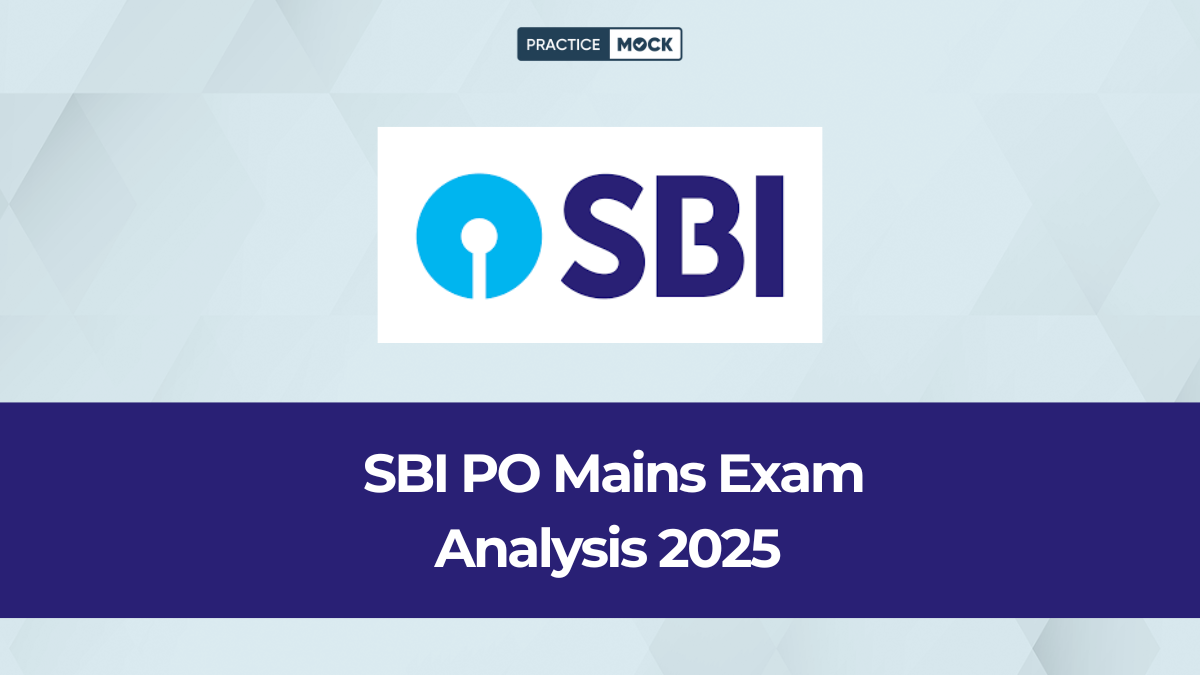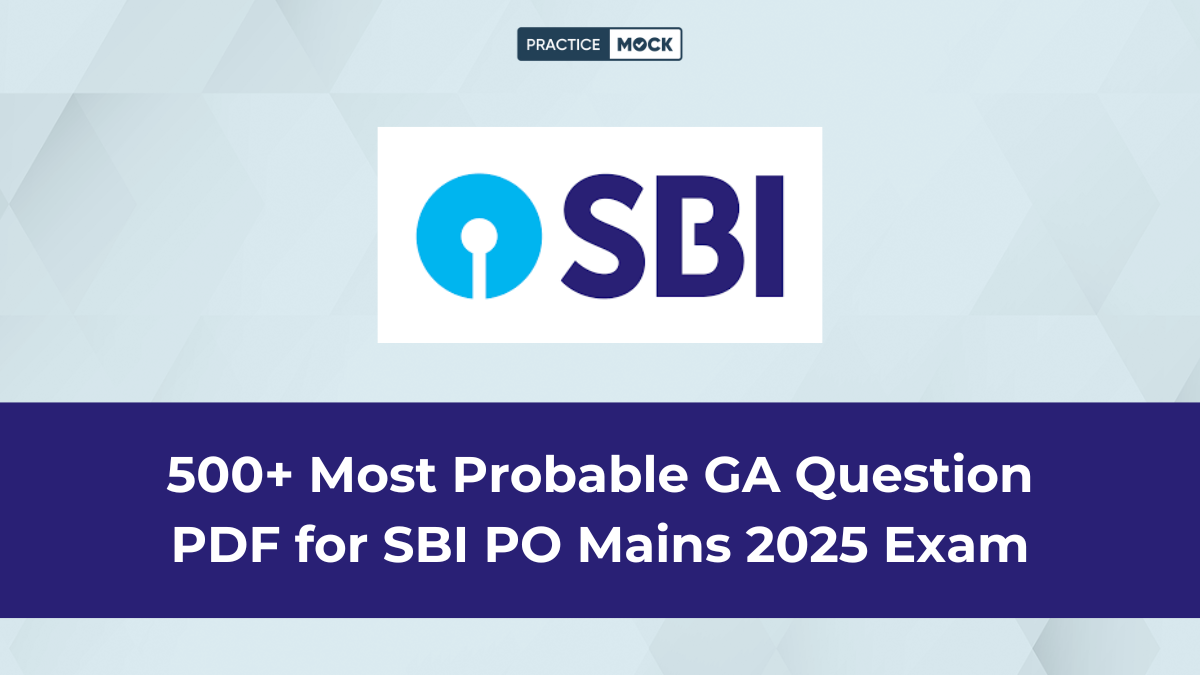Inequality Most Expected Questions for SBI PO 2024 Prelims Exam


Inequality Questions for SBI PO 2024 Prelims Exam: Inequality is a topic that belongs to the reasoning section of the SBI PO prelims exam. It is considered easy among all the topics. Candidates can expect at least 3-5 questions from this topic in the SBI PO prelims exam. The difficulty level of the questions can be expected at an easy level. One can achieve good marks if he/she has good practice on different types of questions based on different patterns. In this blog, we have provided a basic concept of Inequality and some features about it. Also, we have provided Inequality questions for SBI PO 2024 prelims exam with their solutions in the PDF. Candidates are highly encouraged to go through this blog carefully and advised to first understand the concept and then solve the questions.
Concept of Inequality
Inequality in reasoning refers to a type of logical relationship between two values or expressions, where one is greater than, less than, or not equal to the other. It’s an essential concept used in various reasoning and competitive exams, especially in verbal and analytical reasoning sections.
Let’s break down the concept of inequality step by step:
1. Basic Symbols of Inequality:
In reasoning, the following symbols are used to express inequalities:
- Greater than ( > ): Indicates that the value on the left is greater than the value on the right.
Example: A>B means A is greater than B. - Less than ( < ): Indicates that the value on the left is smaller than the value on the right.
Example: A<B means A is smaller than B. - Greater than or equal to ( ≥ ): Indicates that the value on the left is either greater than or equal to the value on the right.
Example: A≥B means A is greater than or equal to B. - Less than or equal to ( ≤ ): Indicates that the value on the left is either smaller than or equal to the value on the right.
Example: A≤B means A is less than or equal to B. - Not equal to ( ≠ ): Indicates that the two values are not equal.
Example: A≠B means A is not equal to B.
2. Inequality Relations:
Inequalities are used to compare two values or expressions, showing a relationship of greater, lesser, or equal. For example:
- A>B means A is greater than B.
- A<B means A is smaller than B.
- A≥B means A is greater than or equal to B.
- A≤B means A is smaller than or equal to B.
- A≠B means A is not equal to B.
3. Transitive Property:
The transitive property of inequality states that if you have two inequalities that relate to three elements, the inequality can be transferred from one pair to another.
- If A>B and B>C, then A>C.
- If A<B and B<C, then A<C.
4. Adding/Subtracting Inequalities:
When adding or subtracting values from both sides of an inequality, the inequality direction remains unchanged:
- If A>B, then A+C>B+C, for any constant C.
- If A<B, then A−C<B−C, for any constant C.
5. Multiplying/Dividing Inequalities:
When multiplying or dividing an inequality by a positive number, the inequality direction remains the same:
- If A>B and C>0, then A×C>B×C.
- If A<B and C>0, then A×C<B×C.
However, if you multiply or divide by a negative number, the inequality direction flips:
- If A>B and C<0, then A×C<B×C.
6. Compound Inequalities:
Sometimes, two or more inequalities get joined together using the words “and” or “or”:
- “And”: In this case, both inequalities must be true simultaneously.
- Example: 2<x<5 means x must be greater than 2 and less than 5.
- “Or”: In this case, at least one of the inequalities must be true.
- Example: x<3 or x>5 means x is either less than 3 or greater than 5.
Most Expected Important Questions PDF for Inequality
Question 1: In the question, assuming the given statements to be true, find which of the conclusion (s) among given three conclusions is /are definitely true and then give your answer accordingly.
Statements: U > R < P ≤ L; R ≥ B > O < M
Conclusions:
I. U > M
II. L > O
III. M ≤ P
A) Only conclusion I is true.
B) Only conclusions I and III are true.
C) Only conclusion II is true.
D) Both conclusions II and III are true.
E) All conclusions I, II and III are false.
Question 2: In the question, assuming the given statements to be true, find which of the conclusion (s) among given three conclusions is /are definitely true and then give your answer accordingly.
Statements: D ≥ M; R < C ≤ D; Y < R < L
Conclusions:
I. Y < D
II. L > D
III. M < C
A) Only conclusion II is true.
B) Only conclusions I and II are true.
C) Only conclusions II and III are true.
D) Only conclusion I is true.
E) All conclusions I, II and III are false.
Question 3: In the question, assuming the given statements to be true, find which of the conclusion (s) among given three conclusions is /are definitely true and then give your answer accordingly.
Statements: T ≤ V < N; S ≥ T; U < N < Z
Conclusions:
I. T < Z
II. U < V
III. N > S
A) Only conclusion II is true.
B) Only conclusion I is true.
C) Only conclusions I and II are true.
D) Only conclusions II and III are true.
E) All conclusions I, II and III are false.
Question 4: In the question, assuming the given statements to be true, find which of the conclusion (s) among given three conclusions is /are definitely true and then give your answer accordingly.
Statements: K > T ≥ L; C ≥ K; M < R ≤ C
Conclusions:
I. M < T
II. L < C
III. K < R
A) Only conclusion II is true.
B) Only conclusion I is true.
C) Only conclusions I and II are true.
D) Only conclusions III are true.
E) All conclusions I, II and III are false.
Question 5: In the question, assuming the given statements to be true, find which of the conclusion (s) among given three conclusions is /are definitely true and then give your answer accordingly.
Statements: P < L ≤ K; P ≤ S > U; R < U
Conclusions:
I. K > S
II. R < P
III. L > U
A) Only conclusion II is true.
B) Only conclusions I and II are true.
C) Only conclusions II and III are true.
D) Only conclusion I is true.
E) All conclusions I, II and III are false.
| Related Articles on the SBI PO 2024 Exam | |
| SBI PO Exam Pattern 2024 | SBI PO Previous Year Question Paper |
| SBI PO Salary 2024 | SBI PO Syllabus 2024 |
| SBI PO Notification 2024 | SBI PO Cut Off 2024 |
Inequality Questions for SBI PO 2024 Prelims Exam FAQs
Inequality in reasoning refers to a type of logical relationship between two values or expressions, where one is greater than, less than, or not equal to the other.
Candidates can expect at least 3-5 questions from Inequality in the SBI PO prelims exam.
The difficulty level of the Inequality questions in the SBI PO prelims exam can be considered an easy level.
In this blog, we have provided the Inequality questions based on different patterns, refer to our blog.
Recent Posts
180-Day IBPS PO Prep Timeline for Prelims, Mains & Interview
Follow this proven 180-day strategy to prepare for IBPS PO Prelims, Mains, and Interview with…
Most Repeated Floor Based Puzzle Questions for RRB PO 2025, Check How to Solve it Speedily?
Here we are providing the Most Repeated Floor Based Puzzle Questions for RRB PO 2025…
RRB ALP Vacancy 2025-26 Out for 9970 Posts, Notification Expected Soon
The RRB has released the RRB ALP Vacancy 2025-26 for 9970 Posts. This blog has…
SSC CGL Previous Year Question Paper in Form of Free Quiz and PDF
This blog has provided the SSC CGL Previous Year Question Paper in the form of…
500 SSC CGL Repetitive One-Word Substitutions
In this blog, we have provided the 500 SSC CGL Repetitive One-Word Substitutions PDF to…
SSC CGL Previous Year Question Papers with Solutions for Tier 1 & 2, Get Free PDF
Explore the SSC CGL Mains Previous Year Question Papers to know the difficulty level of…



